When choosing a mountain backpack it is very important to take into account the different types of settings it has. It will be these adjustments that keep the backpack well attached to our back, shoulders and hip to be able to carry large loads in comfort.
The most basic adjustments, such as the lumbar belt or shoulder pads, are carried as standard by all the current trekking and mountaineering backpacks on the market and are essential for large volume backpacks with which it is intended to make long or multi-day routes. The rest of the adjustments, although they are still important, can be present depending on the manufacturer and the model of the backpack.
Lumbar belt
Without a doubt it is the fundamental piece of any backpack since it transmits 80% of the weight to the hips and thanks to this it is released to the back and shoulders of most of the weight. By carrying the weight on the hips, it is transmitted directly to our legs that are more prepared than our backs to support greater loads.
This belt fits over our hips hugging its highest part and completely surrounding the contour of the waist.

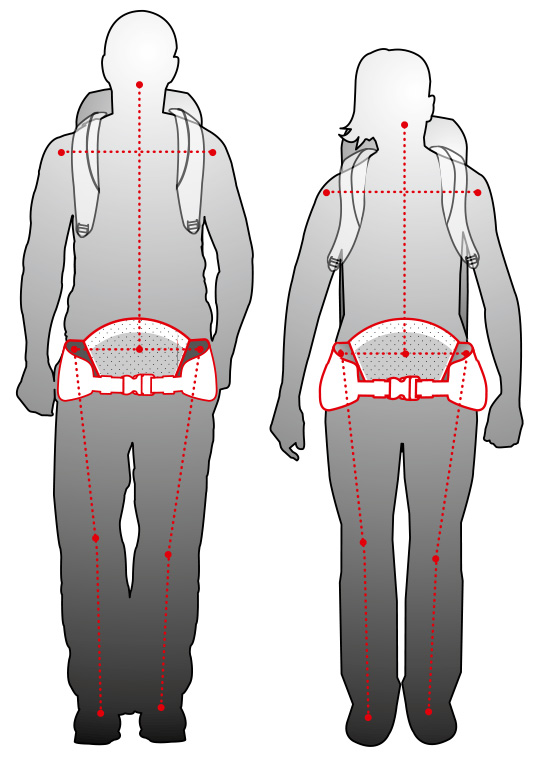 Most brands manufacture backpacks specially designed for women whose lumbar belt adapts to the specific shape of their hips, more conical and wide than those of men.
Most brands manufacture backpacks specially designed for women whose lumbar belt adapts to the specific shape of their hips, more conical and wide than those of men.
Shoulder pads
As we have seen, 20% of the weight of the backpack will go to the shoulders and back through the shoulder pads. Adjusting them correctly is essential to have well balanced weight and distributed the load equally between the two shoulders.
The shoulder pads must be tense and travel the chest and shoulders maintaining contact with the body. If they are not completely tense, the backpack will not be fully fixed to the back which can unbalance the weight and end up pulling a little more chest.
With wider shoulder pads it is possible to have more contact surface with the body so the weight is distributed more. A padded shoulder and soft tissue can help make contact more comfortable.
The shoulder pads should be at a comfortable height that allows the best possible mobility. As a general rule, they should end up in the lower chest.
Currently a large number of backpack models incorporate adjustable shoulder pads. This is that they can be adjusted in height or length to suit the different heights and lengths of each person’s back. This makes it much easier for the backpack to adapt smoothly to your back.
Adjustment tapes
Chest ribbons finish attaching the shoulder pads to the body providing greater stability during movement. Once adjusted, the two shoulder pads are joined over the chest. In women’s backpacks this tape is usually a little higher to avoid discomfort with the chest.
From the top of the shoulder pads is born an adjustment tape that joins with the highest part of the backpack that is above the height of the shoulders. This tape serves to bring the load closer or away from our center of gravity as we are going up or down so they must be regulated according to the march. Normally they should form an angle to the horizontal of 45 degrees.
Compression tapes
The compression tapes are spread across the outside of the backpack and their purpose is to compress the load when the backpack is not completely full. With this we get that the load is fixed and does not move in addition to bringing it closer to our back to maintain our axis and the center of gravity.
Back or back
The backrest transfers the weight of the backpack to the lumbar belt. For this the most common thing is that it has inside a frame, a piece of hard material that helps to carry the weight to the belt. In some models this frame can be removed and molded to adapt it to the shape of the back.
It is also important that you have a good padding on the upper back which is the area of greatest contact with the backpack.
There are backpacks that have a mesh on the back to have less contact surface with the back and get more ventilation. In addition, some of these backpacks can vary the tension of the mesh to better adapt to the different thermal and sports conditions. When the mesh is de-detached from the body which moves away the center of gravity but will give us greater ventilation in the back.
A new back variant, which was born with the Osprey Atmos AG 50 backpack,has the concept of fully embracing the user’s back, which makes the transfer of loads and the way of use go a step beyond conventional backrests. This is achieved by manufacturing the back and lumbar belt in one piece and giving the belt an extra pressure so that the whole fits completely to the back and hips of the person. Thus, the backpack “hugs” the user’s body looking like one more part of their body.
Back size or length
All backpacks have size. Although they are backpacks of fixed back or one size,these have a length of back that make them be within a scale of sizes.
Choosing a suitable size is essential for the length of the backpack to fit the length of our back.
Currently many of the backpacks that are manufactured allow you to adjust the length of your backrest or shoulder pads to suit the person who wears it. However, most backpacks have a fixed length and each manufacturer has its own carving system so there is no single system for carving backpacks.
To know the length of our torso we must measure the distance between the 7th cervical vertebra that is at the base of the neck and the iliac crest at the top where the hip bone ends. This distance is the length of the back of the backpack we need.
Although each person has their own measurements and it is always recommended to know them, you can take as a reference the following table to get a rough idea of the length of our torso starting from our height.
Man Height / Torso Length
160-175 cm / 45-52 cm
170-185 cm / 50-57 cm
180-200 cm / 55-62 cm
Woman Height / Torso Length
155-170 cm / 40-47 cm
165-180 cm / 45-52 cm
From here you have to look for the own size of each manufacturer to find the backpack that best fits our torso. You can take the following guide as a general and approximate reference of the sizes of the backpacks although you always have to go to the own size of each brand to know which is the most appropriate size.
Extra S, very small: less than 39 cm.
S, small: from 40 to 45 cm.
M, average: from 46 to 50 cm.
L, large: from 51 cm.

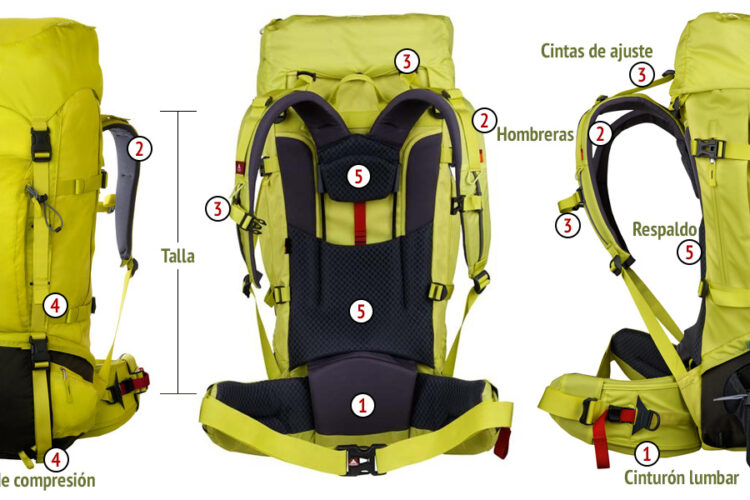
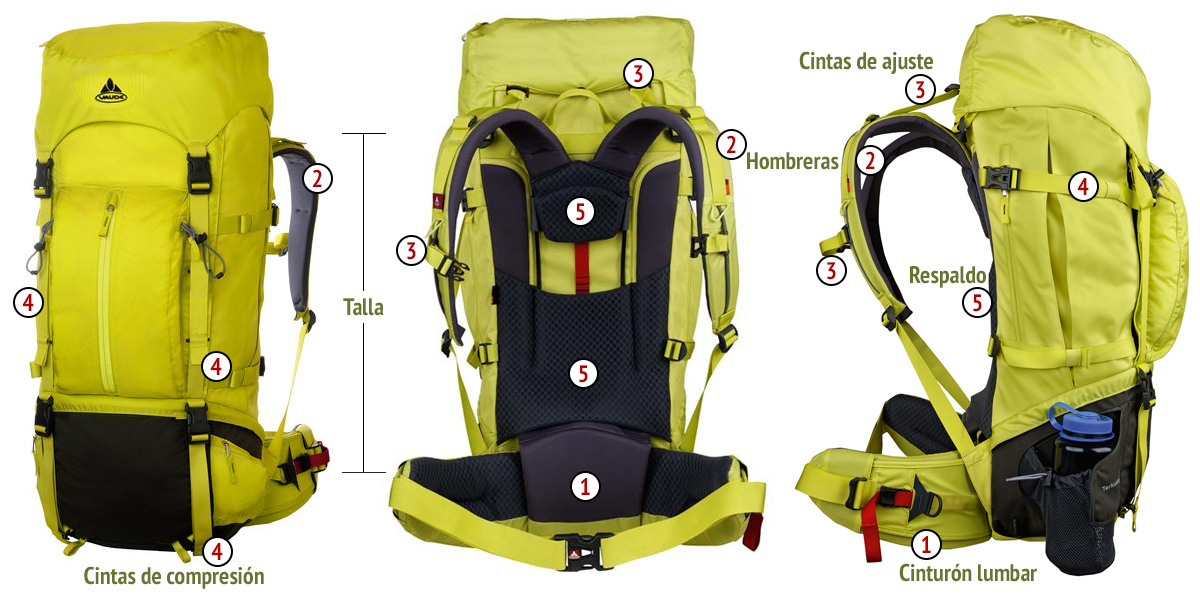
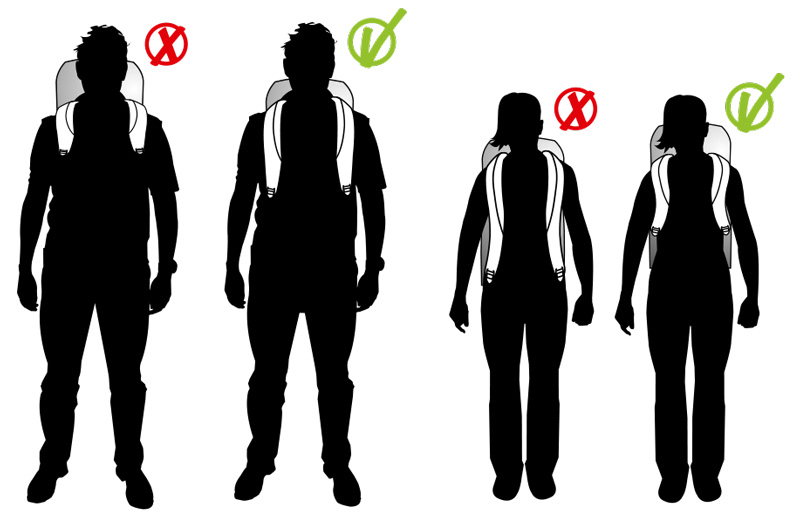
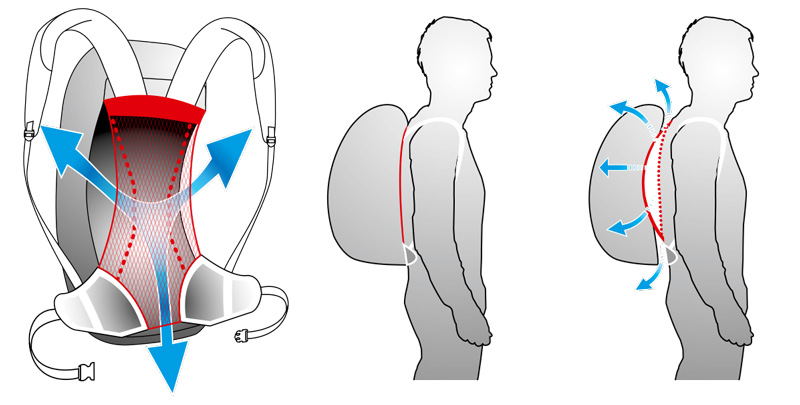
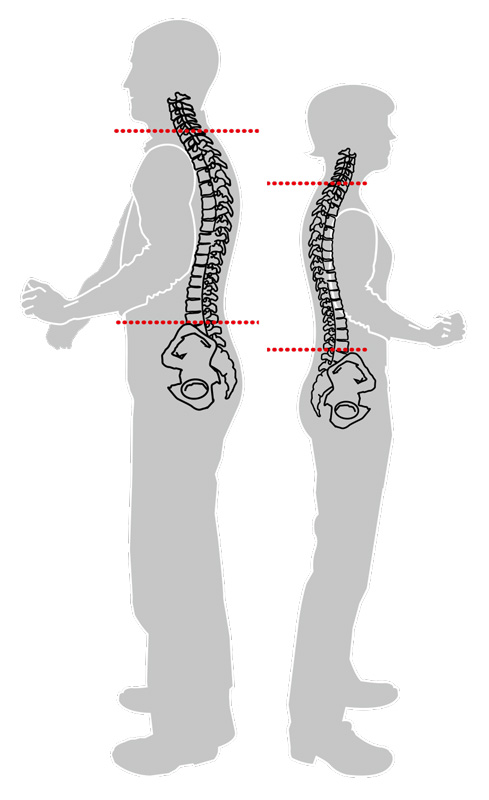
We are also in